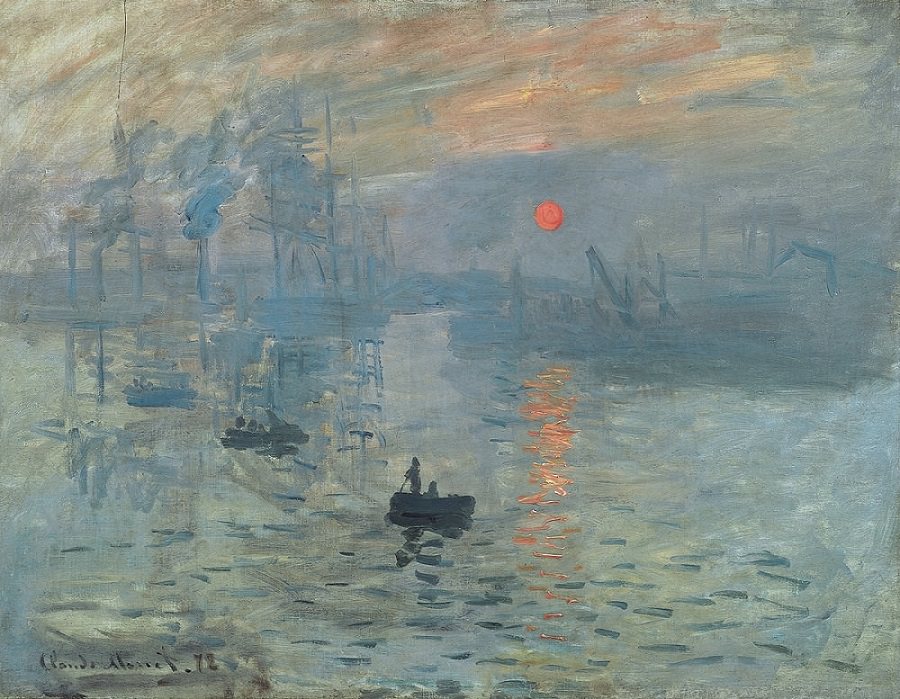Impression Sunrise by Claude Monet
This work was painted from a hotel window at Le Havre in 1873 (Monet later dated it incorrectly to 1872). It was one of the nine works
that he showed at the First Impressionist Exhibition of 1874. Of all those displayed there, this is probably the most famous picture, not so
much because of any crucial status within Monet's oeuvre, but rather for the criticism it attracted from the reviewers, which gave rise
to the name of the movement. On 25 April, ten days after the exhibition had opened, an article appeared in the satirical journal Le Charivari
in which the critic Louis Leroy described a fictitious conversation between two visitors. One of them was a landscape painter who, while
looking at this work, exclaimed: 'Impressionism, I knew it; after all I'm impressed so it must be an impression...What freedom! What
ease of workmanship! Wallpaper in its embryonic state is more finished than this seascape!' The article was entitled 'The Exhibition of the
Impressionists', and the label stuck thereafter, as well as being used by such other critics of the exhibition as Castagnary.
Despite its notoriety the painting is in some ways untypical of Monet's own work of this period and of Impressionism more generally. It shows
little of the Impressionist treatment of light and color. The colors are very restrained and the paint is applied not in discrete
brushstrokes of contrasting colours but in very thin washes. In some places the canvas is even visible and the only use of impasto is in the
depiction of the reflected sunlight on the water. The painting is strongly atmospheric rather than analytical and has a spirit somewhat akin
to Turner's works. Nevertheless, it does illustrate particularly well one of the features of Impressionist painting that was thought so
revolutionary. The technique is very 'sketchy' and would have been seen as a preliminary study for a painting rather than a finished work
suitable for exhibition. (Monet himself saw the work as unfinished, and it was for that reason that he adopted the title 'Impression' to
distinguish it from such works as his other view of Le Havre in the same exhibition, though this too lacks the finish then expected.) In this
work Monet stripped away the details to a bare minimum: the dockyards in the background are merely suggested by a few brushstrokes as are the
boats in the foreground. The whole represents the artist's swift attempt to capture a fleeting moment. The highly visible, near abstract
technique, compels almost more attention than the subjectmatter itself, a notion then wholly alien to viewers.
